Steven Bogaerts still remembers the exact moment the idea for “The Lost Guardian of Malta” came to him. He wasn’t sitting at a desk or poring over historical texts, instead, he was standing at the edge of the Ħaġar Qim temple complex.
“The air was heavy with the scent of the sea, and the horizon stretched endlessly, blending into a soft gradient of blues and oranges. The serenity of the scene was almost overwhelming. But amidst the tranquility, one thought nagged at him: What if this wasn’t just a relic of the past? What if these stones were part of something… bigger? Something that mattered now, today?”
Bogaerts, a celebrated author with over 20 novels to his name, was no stranger to the creative process. Yet, this was different. Standing there, surrounded by history, he felt a spark that didn’t just nudge him toward a story—it practically demanded to be written.
“I’ve always loved Malta,” Bogaerts explains. “It’s not just the history, though that’s undeniably fascinating. It’s the way the past feels alive here, like it’s always watching, just beneath the surface of modern life. There’s an energy to this island that I haven’t felt anywhere else.”
A lifelong connection to Malta
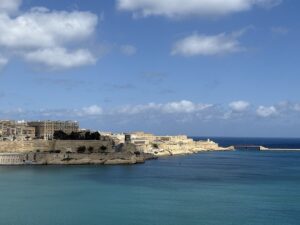 Bogaerts’ love affair with Malta began years ago during a family vacation. Over time, his frequent visits turned into something more profound. He forged close friendships, discovered distant family connections, and immersed himself in the island’s unique blend of ancient and contemporary culture.
Bogaerts’ love affair with Malta began years ago during a family vacation. Over time, his frequent visits turned into something more profound. He forged close friendships, discovered distant family connections, and immersed himself in the island’s unique blend of ancient and contemporary culture.
“Malta is a paradox,” he says. “You’ve got this cutting-edge modernity—like the clubs in Paceville or the international tech hubs—and then you step a few kilometers away, and it’s like you’ve walked into the past. Mdina’s streets are silent and ancient, the temples are older than the Pyramids, and the catacombs whisper stories you’ll never fully understand. It’s a storyteller’s dream.”
This connection deepened with every visit. Malta became more than just a place to relax; it was a place of inspiration. Yet, despite years of writing successful novels in Dutch, he never thought of setting a book there. At least, not until that evening at Ħaġar Qim.
The seed of an idea
 The temples at Ħaġar Qim, Tarxien and Mnajdra have fascinated archaeologists and historians for centuries. Built around 3600 BCE, they are older than Stonehenge and shrouded in mystery. No one knows exactly how or why the ancient Maltese built them. Theories range from religious ceremonies to astronomical observatories. For Bogaerts, this ambiguity was fuel for his imagination.
The temples at Ħaġar Qim, Tarxien and Mnajdra have fascinated archaeologists and historians for centuries. Built around 3600 BCE, they are older than Stonehenge and shrouded in mystery. No one knows exactly how or why the ancient Maltese built them. Theories range from religious ceremonies to astronomical observatories. For Bogaerts, this ambiguity was fuel for his imagination.
“Standing there, it hit me,” he recalls. “What if these weren’t just monuments? What if they were more… deliberate?
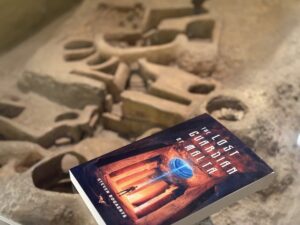 What if they served a purpose no one today fully understands? And what if someone in the present discovered what that purpose was?”
What if they served a purpose no one today fully understands? And what if someone in the present discovered what that purpose was?”
That question lingered long after he left the temple. It followed him through the bustling streets of Valletta, echoed in the limestone alleys of Mdina, and resurfaced as he explored the eerie quiet of St. Paul’s Catacombs. Slowly, a story began to form—a story that blended Malta’s ancient secrets with the frenetic pace of modern life.
From inspiration to action
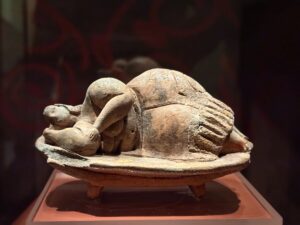 Back in Belgium, Bogaerts couldn’t shake the idea. He began researching Malta’s history more deeply, poring over books, articles, and archaeological studies. He interviewed locals, visited lesser-known sites, and even retraced his steps through the temples and catacombs.
Back in Belgium, Bogaerts couldn’t shake the idea. He began researching Malta’s history more deeply, poring over books, articles, and archaeological studies. He interviewed locals, visited lesser-known sites, and even retraced his steps through the temples and catacombs.
“I realized early on that I didn’t want to write a historical novel,” Bogaerts says. “History was the backdrop, but the story had to be contemporary. I wanted readers to feel the same sense of urgency and wonder that I felt standing at those sites, or looking at the Sleeping Lady.”
The protagonist, Ceti, emerged from this creative process. A young courier caught between Malta’s modern chaos and its ancient mysteries, Ceti embodied the very tension that fascinated Bogaerts.
“Ceti is someone who feels disconnected from his roots, yet drawn to something he can’t quite explain,” Bogaerts explains. “In many ways, he’s a reflection of Malta itself—a place that’s constantly moving forward but always anchored by its past.”
The challenge of writing in English
While the story came naturally, writing it in English presented a new challenge. Bogaerts had spent his career crafting novels in Dutch, and this was his first direct attempt at writing in English.
“It was intimidating at first,” he admits. “I was stepping out of my comfort zone, but I felt it was necessary. The story was so tied to Malta’s international identity that it made sense to write it in English. Plus, it allowed me to reach a wider audience.”
To ensure the language felt authentic, Bogaerts worked closely with native English-speaking editors and beta readers. He also leaned on his connections in Malta to ensure the dialogue and cultural references rang true.
“I wanted the book to feel genuine, both to Maltese readers and to those who’ve never set foot on the island,” he says.
A story for everyone
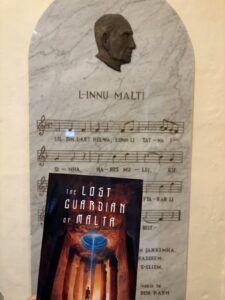 The Lost Guardian of Malta is more than just a thriller.
The Lost Guardian of Malta is more than just a thriller.
It’s a love letter to Malta, a reflection on identity, and an exploration of how the past shapes the present.
For Bogaerts, it’s a story that resonates far beyond the island’s shores.
“I think everyone, no matter where they’re from, can relate to the themes in this book,” he says. “We all grapple with questions about where we come from and how our history defines us. That’s what Ceti’s journey is ultimately about.”
As for the future, Bogaerts isn’t ruling out a sequel. With Malta’s deep well of history and mythology, he’s confident there are more stories waiting to be told.
“Malta never stops surprising me,” he says with a smile. “I have a feeling Ceti’s story isn’t finished yet.”
A journey waiting to be discovered
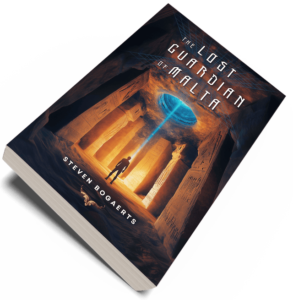 For readers, “The Lost Guardian of Malta” offers a chance to dive into a world where history and mystery collide. Whether you’re familiar with Malta or discovering it for the first time, Bogaerts promises an unforgettable journey.
For readers, “The Lost Guardian of Malta” offers a chance to dive into a world where history and mystery collide. Whether you’re familiar with Malta or discovering it for the first time, Bogaerts promises an unforgettable journey.
“All it takes is one question,” he says. “What if these stones could talk? The rest, as they say, is history—or maybe something even more thrilling.”



